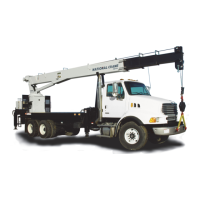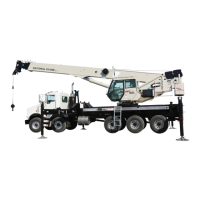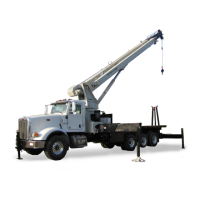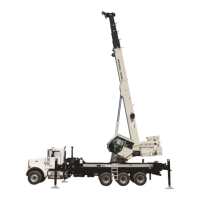National Crane Published 5-27-2018 Control # 039-06 3-1
800D MAINTENANCE
SECTION 3
MAINTENANCE
SECTION CONTENTS
Inspection and Maintenance . . . . . . . . . . . . . . . . . 3-1
Inspection . . . . . . . . . . . . . . . . . . . . . . . . . . . . . . . 3-1
Daily Inspections. . . . . . . . . . . . . . . . . . . . . . . . . . 3-1
Weekly Inspections . . . . . . . . . . . . . . . . . . . . . . . . 3-2
Monthly Inspections . . . . . . . . . . . . . . . . . . . . . . . 3-2
Periodic Inspection . . . . . . . . . . . . . . . . . . . . . . . . 3-2
Other. . . . . . . . . . . . . . . . . . . . . . . . . . . . . . . . . . . 3-3
Hoist Cable Inspection and Maintenance. . . . . . . 3-3
Keeping Records . . . . . . . . . . . . . . . . . . . . . . . . . 3-3
Environmental Conditions . . . . . . . . . . . . . . . . . . . 3-3
Dynamic Shock Loads . . . . . . . . . . . . . . . . . . . . . . 3-3
Precautions and Recommendations
During Inspection. . . . . . . . . . . . . . . . . . . . . . . . . . 3-3
Inspection . . . . . . . . . . . . . . . . . . . . . . . . . . . . . . . 3-4
Wire Rope Replacement . . . . . . . . . . . . . . . . . . . . 3-4
Adjustments and Repairs. . . . . . . . . . . . . . . . . . . . 3-5
Seizing Wire Rope . . . . . . . . . . . . . . . . . . . . . . . . . 3-5
Care of Wire Rope . . . . . . . . . . . . . . . . . . . . . . . . . 3-6
Tire Load and Inflation Table . . . . . . . . . . . . . . . . . 3-7
INSPECTION AND MAINTENANCE
A regular schedule of inspection and maintenance is
essential to keep your unit in peak operating efficiency.
Operators or service personnel responsible for the care of
the unit must be completely familiar with the type and
frequency of inspections and maintenance operations. The
following pages outline the inspections and maintenance
required to keep the crane in proper operating condition.
Inspection
The following pages list inspections which are to be
conducted on your unit to help assure it is operating properly
and safely. Check all items listed at the frequency listed and
make necessary repairs prior to operating. Use applicable
torque table requirements for missing or loose fasteners.
The inspections are separated into the following frequency
classifications:
• Daily Inspections-These items should be visually
inspected each day by the operator prior to using
the unit.
• Weekly Inspections-These items should be
visually inspected weekly by the operator.
• Monthly Inspections-These inspections are to be
performed monthly by the personnel responsible for
maintenance and service of the crane.
• Periodic Inspections-This inspection is a thorough
inspection conducted at least every three months
and includes all items listed under Daily, Weekly,
and Monthly Inspection in addition to those items
listed under periodic inspection. Federal Laws
through OSHA and ANSI B30.5 require that dated
and signed records of these periodic inspections be
kept. A crane inspection log book is available from
National Crane to assist you in keeping records.
Daily Inspections
Check the following items:
1. Engine oil level.
2. Hydraulic oil level.
3. Radiator coolant level.
4. Loose parts or damage to structures or welds.
5. Operation of lights, safety equipment and gauges.
6. Condition of tires and suspension.
7. Condition of loadline and end attachment for
corrosion, severe kinking, crushing, cutting, or
slippage of cable clamps or wedge socket.
8. Loose parts or damage to loadline centering blocks.
9. Position of loadline with guides and on sheaves.
10. Free turning of sheaves.
11. Lubrication of points required by Lubrication Chart
For more information, see Lubrication Chart,
page 4-4.
12. Evidence of oil leak from hoses, gearboxes or
swivel.
13. Hand and foot controls for malfunction or
misadjustment.
14. Truck parking brake operation.
15. Boom proportioning to insure that all boom sections
extend and retract equally.
Fo
r
Reference
Only
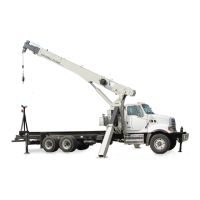
